For some, escaping the daily grind means getting their adrenaline pumping on a rugged cliff or shredding some gnarly singletrack. Others search for clear lakes and enchanting vistas simply for a change of scenery. We asked some of our regional outdoor adventure experts for their top picks in their preferred activities to help you plan your next outdoor getaway.
Hiking: Shawn Gossman, Hiking with Shawn
Shawn Gossman began hiking every weekend in Shawnee National Forest about 12 years ago. Not long after those early hikes, he started the Hiking with Shawn social media platform to share his adventures with friends and family; this eventually evolved into a brand whose mission it is to support the regional economy through outdoor recreation tourism in southern Illinois.
Gossman admits he may be biased, but his top pick for hiking is Shawnee National Forest. He says Shawnee has a bit of everything — vast forests, wetlands, canyons, bluffs, waterfalls, a variety of plants and animals — and is within easy driving distance. One unique claim to fame is that it is the only place in the world that annually closes a road so snakes can safely migrate across. (Google “LaRue Pine Hills Snake Road.”)
According to Gossman, people pay big money to travel to Shawnee to ride horses and hunt because of the 400+ miles of trail and generous deer population. “We have hiking and backpacking, equestrian, mountain biking, wildlife watch, kayaking, and climbing spots that are famous around the country.”
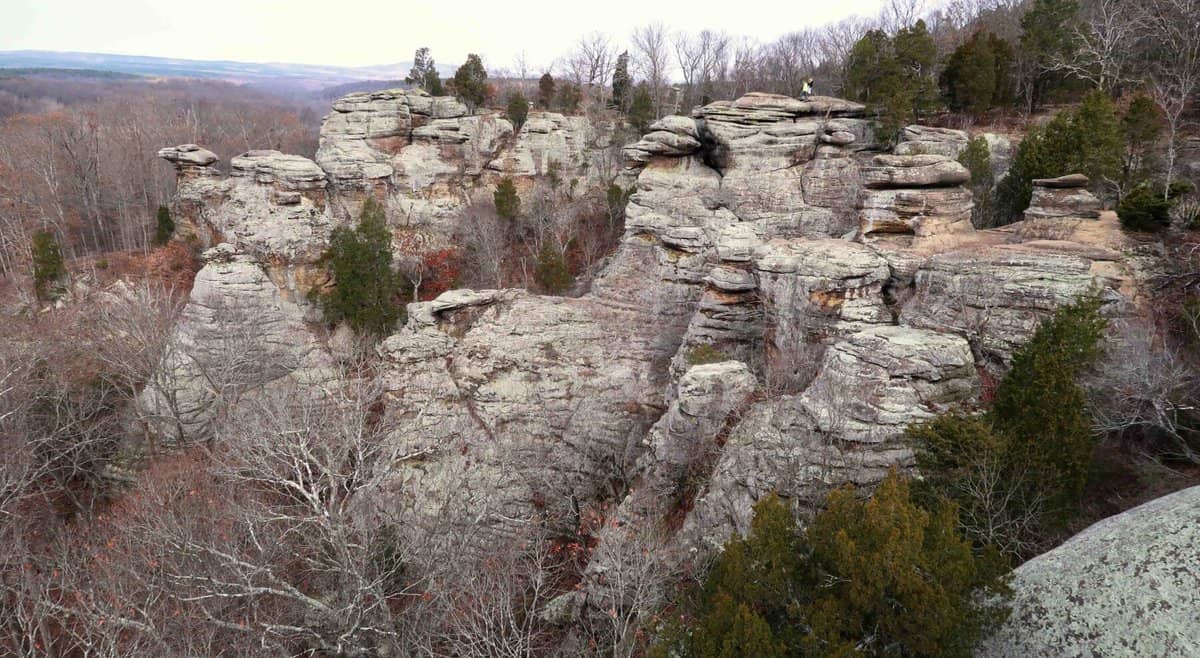
Garden of the Gods. (Shawn Gossman}
Within the massive, 289,000-acre national forest, Gossman says his favorite place to hike is the Garden of the Gods/Rim Rock area, which is characterized by towering sandstone outcrops and unusual rock structures. “You have all the good stuff everyone likes to visit, but then you have many off-the-beaten-path spots that hardly see a soul,” he said.
The trails at the Garden of the Gods offer hassle-free accessibility and diversity, and are suitable for all ages and all abilities.
For a short hike with beautiful views, there is a 0.25-mile trail marked with flagstone pavers that allows visitors to view miles of scenic Shawnee woodlands from a soaring vantage point. Along this trail are signs that highlight the historical and geologic features of these breathtaking bluffs, with panoramic vistas of the protected forest below. Famous formations along the trail include Camel Rock, Anvil Rock, and Mushroom Rock.
For a more extended hike, there are 5.5 miles of interconnecting trails that traverse the landscape of Garden of the Gods from top to bottom. Hikers will experience a variety of flora and fauna specific to southern Illinois, with picnicking sites along some of the trails for those who want to spend a full day exploring the area.
Gossman also notes that there are many small communities scattered around the outskirts of Shawnee National Forest that provide a welcoming environment and everything visitors need for an extended stay: dining, lodging, shopping, sightseeing, and much more.
Mountain Biking: Jay Thomas, Roots MTB
Jay Thomas, owner and lead instructor for Roots Mountain Biking (MTB), fell in love with riding natural-surface trails more than 25 years ago. He grew up in the Northeast, where he honed his technical skills and developed a love of gravity (downhill) bike racing. In addition to hosting coaching clinics for Roots MTB, he has worked as a sales rep in the cycling industry for 20 years. Both have given him lots of opportunities to explore a wide variety of trails throughout the Midwest.
Even though it seems cliché these days, Thomas recommends Bentonville, Arkansas, for a “can’t miss” mountain bike adventure. “It has everything you need and want in one place, and it’s super easy to ride to and from tons of Airbnb’s,” he said.
Thomas says he normally visits Bentonville three to four times a year to teach courses and provide coaching clinics. He always makes time to explore, and due to the ambitious amount of trail construction that continues in the area, he says it is different every time he goes.
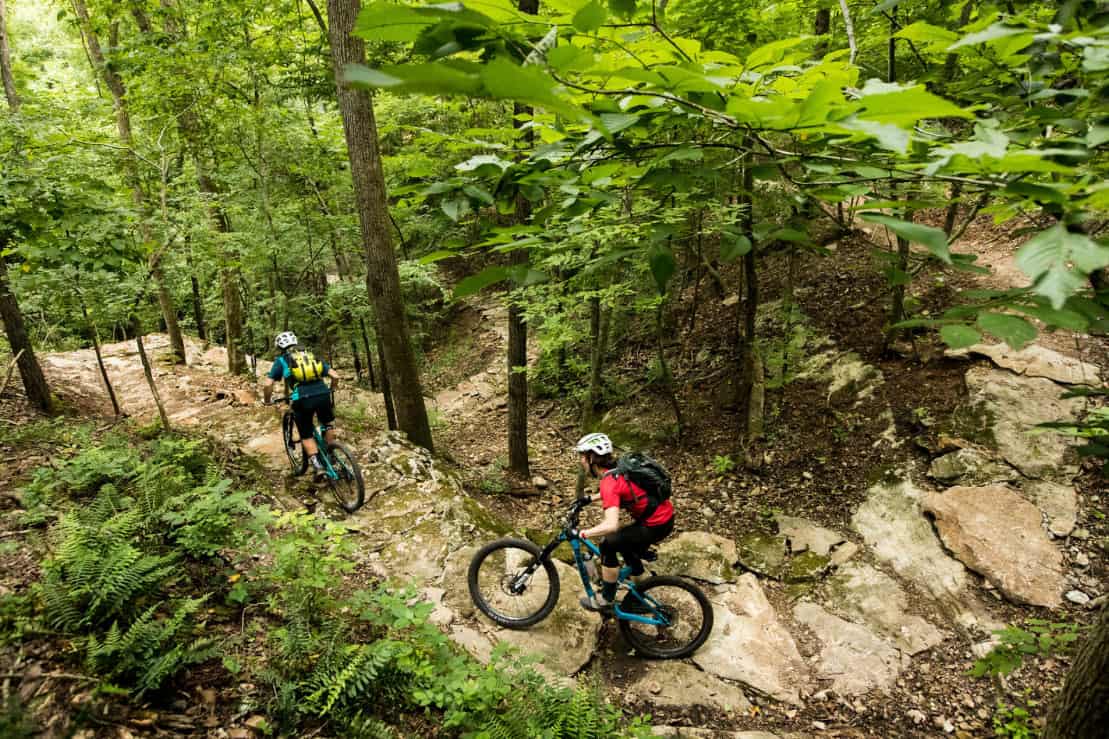
Coler Mountain Bike Preserve. (OZ Trails)
Of all the places to ride in Bentonville, Thomas says his top pick is Coler Mountain Bike Preserve, located two miles west of downtown. Coler offers a variety of trails for all skill levels, including a paved greenway connecting the north and south ends. Trails are well-marked with signage and clear descriptions.
Coler Westside is designed for beginner and intermediate riders but also provides an advanced trail that contours through the middle of the area. Coler Eastside is designed for the more experienced rider and includes a variety of downhill trails starting from The Hub, which Thomas describes as “a giant spider.” This section of the preserve offers a selection of gravity trails that maximize the terrain, including blue flowy trails and blacks with challenging jumps like Drop the Hammer.
In the middle of the preserve is The Homestead, where riders can refuel, rehydrate, and share stories before they hit the next trail. Coler also offers camping and additional trails for walkers and hikers.
Beyond Coler, Bentonville features a charming downtown square with great food and drink options, award-winning museums, and tons of events and festivals throughout the year.
Paddling: Shane Camden, Paddle Stop New Haven
Shane Camden, co-owner of Paddle Stop New Haven with his wife, Stacy, says he has spent his entire life on the water in some capacity. He has participated in the MR340, paddling the Missouri River from Kansas City to St. Charles, and even competed in the race on a standup paddleboard in 2018. Paddle Stop offers a variety of paddling tours and trips, and Camden also provides intro classes for beginners.
Camden paddles on the Missouri River five times a week, and he has floated the Current River, Jack’s Fork, and Buffalo rivers “too many times to count.” Lately, he has been enjoying the van-life — setting out on non-destination adventures where he and Stacy just load up and figure things out as they go.
Camden says he enjoys really clear lakes where there are “lots of coves and rocky outcroppings and islands to explore and unique geological features.” He says two lakes that meet these requirements are Table Rock Lake and Lake Taneycomo.
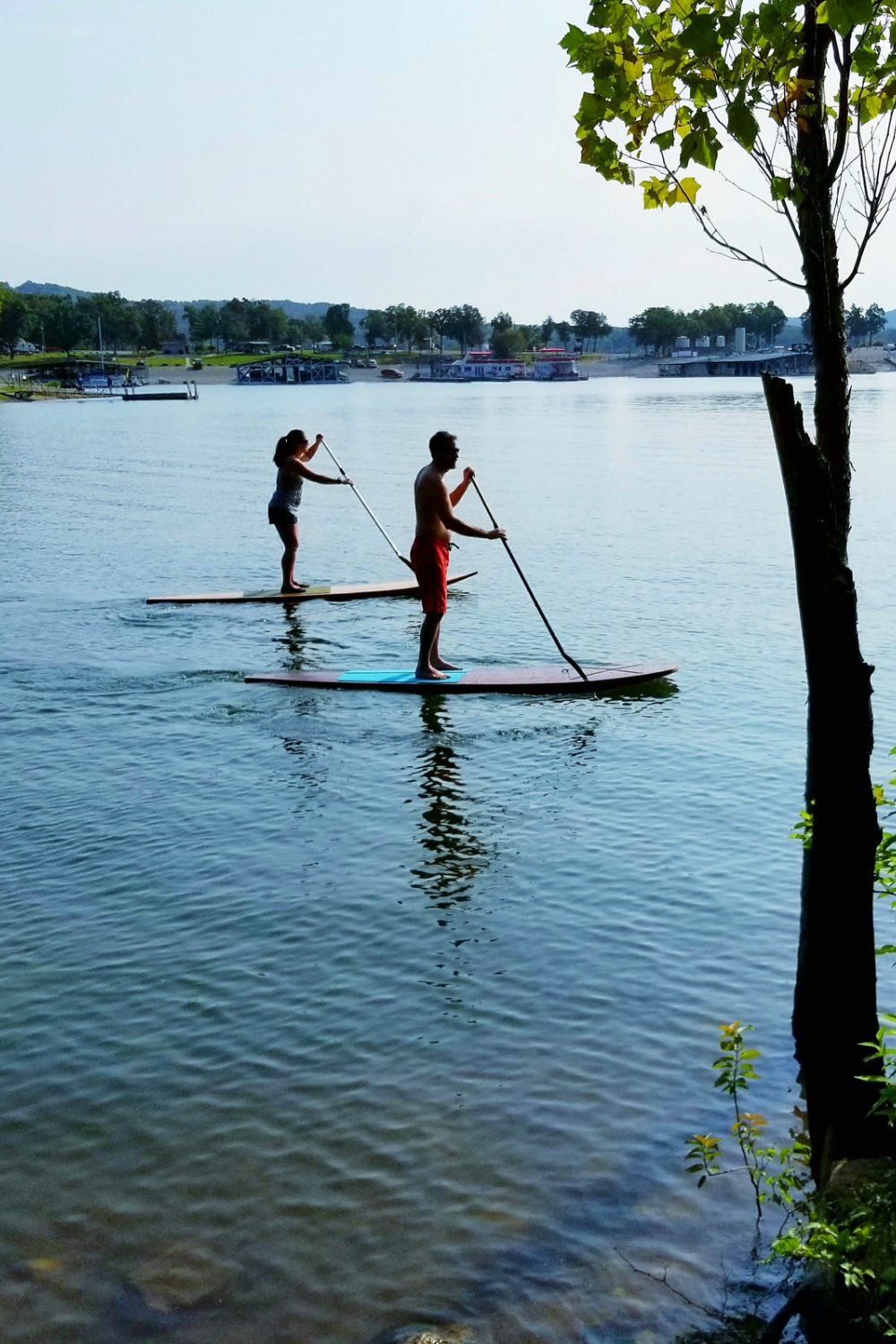
Table Rock Lake. (Shane Camden}
Table Rock Lake, which is located in southwest Missouri and northwest Arkansas, boasts nearly 800 miles of shoreline (it looks more like a river with “fingers” that span several cities and offer many different areas to explore). Camden says that Table Rock is a great place for novice paddlers, but it is important to avoid high boat traffic areas.
Lake Taneycomo is on the other side of Table Rock Dam. Originally a section of the White River, the lake was formed with the completion of the dam in 1913, but its narrow arms and forested shores retain the feel of a river. Camden says it feels “very much like a river for about three miles. It flows, depending on how much water they are releasing, so it can be whitewater for a few miles.”
Paddlers should also be prepared for the water temperature at Taneycomo. Its water comes from the bottom parts of Table Rock Lake, making it the coldest lake in Missouri, with an average water temperature of 48 degrees.
Nearby Branson, Missouri, is a tourist mecca, with world-class entertainment, shopping, accommodations, restaurants, wineries — even a theme park.
Climbing: Jon Richards, Vertical Voyages
Jon Richards has been rock climbing since 1995 and launched his St. Louis-based education and conservation business, Vertical Voyages, in 2009. Over the past 25 years, he has climbed thousands of routes throughout the world, including El Capitan in Yosemite, the Swiss Italian Alps, New Zealand, and Rocky Mountain National Park. He is an American Mountain Guides Association (AMGA) Certified Rock Guide and AMGA Certified Single Pitch Instructor Provider. Through Vertical Voyages, he offers a variety of courses for beginner to experienced climbers.
Richards’ favorite for climbing in the Midwest is Robinson Bluff, which lies about 60 miles southwest of St. Louis in Tiff, Missouri. According to Richards, the land is private, but the public is allowed to climb for a $10 day use fee.
Robinson Bluff has been described as a “Midwest sport climber’s paradise.” Situated along the Big River, the Dolomite limestone walls offer inspiring color and textured lines. With more than 200 sport routes and bouldering problems, climbers will have plenty of prospects for challenging themselves.
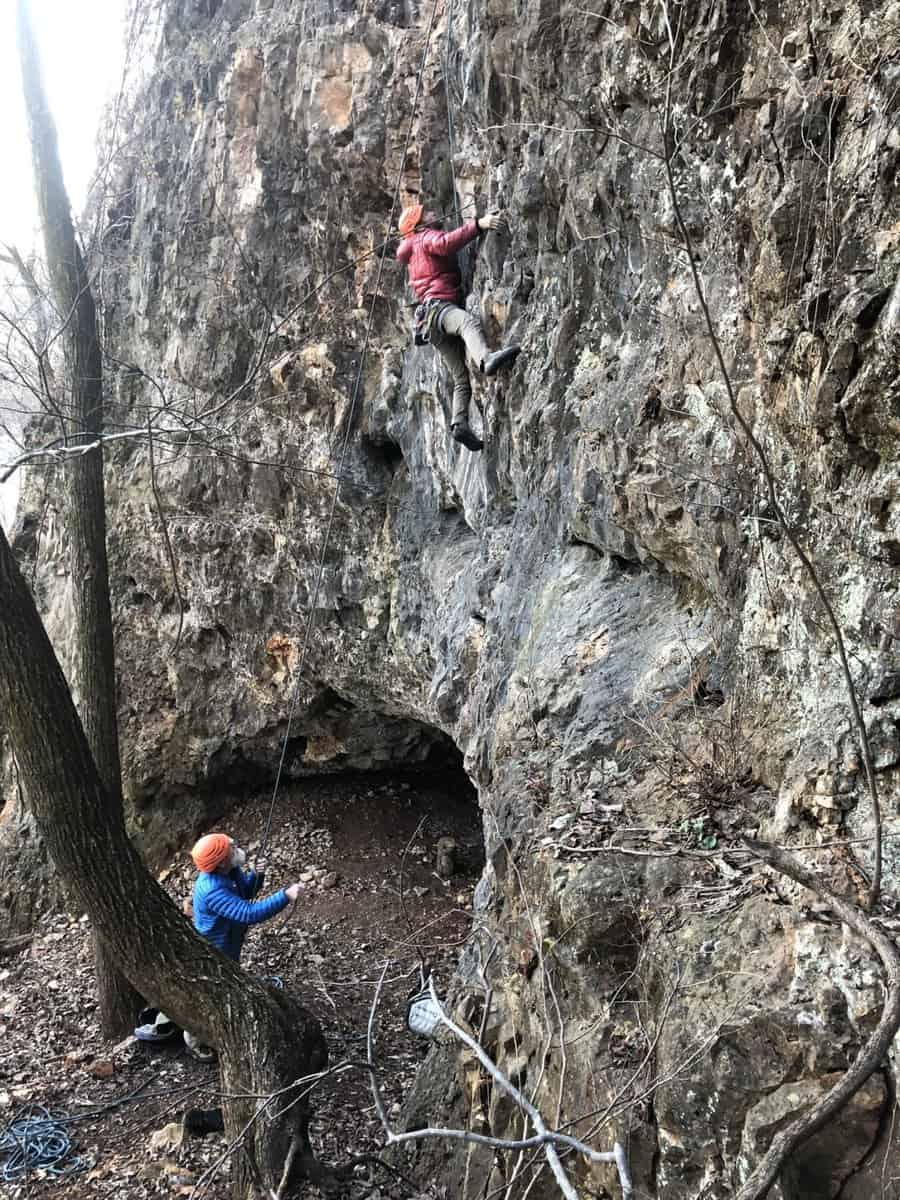
Robinson Bluff. (Jon Richard)
Robinson Bluff is divided into two main rock-climbing areas bisected by a wooden staircase. Climbs south of the stairs are taller, with great movement and a wide range of ratings. Crags north of the stairs include the Goblin Grotto, Red Dihedral Wall, and Picasso Wall. The boulder problems are located at the far north end of the bluff line and include easy to moderately challenging options.
Richards says that Robinson Bluff has great climbing, but he emphasizes the need to wear a helmet. He says, “climbers need to discern and understand that the rock is more fractured,” so they must be more attentive and be prepared if they encounter loose rocks.
For adventurers who want a weekend experience, there are primitive campsites available on-site on a first-come, first-served basis. In addition to great rock climbing, guests have access to trails for hiking and mountain biking, and they can enjoy the Big River after a long day of fun in the sun.
Trail Running: Bryan Kelpe, Missouri Running Company
Bryan Kelpe, co-owner of Missouri Running Company in Cape Girardeau, Missouri, has been involved with running for most of his life, whether competing in trail races and ultramarathons, hosting and directing races of various distances and terrain, or coaching local track and cross-country athletes.
For Kelpe, Trail of Tears State Park near Cape Girardeau, is his favorite trail running location. He grew up camping and hiking here as a child. “Over the last 30 years, I’ve spent thousands of hours on the trails in the park: running, hiking, and volunteering,” he said.
Because he uses the trails as often as he can, Kelpe has had many unforgettable experiences in the park, including encounters with wildlife (deer, turkeys, owls, bald eagles, and even a peacock), winter runs in the snow, and “having a tornado go through within about 100 yards of me.”
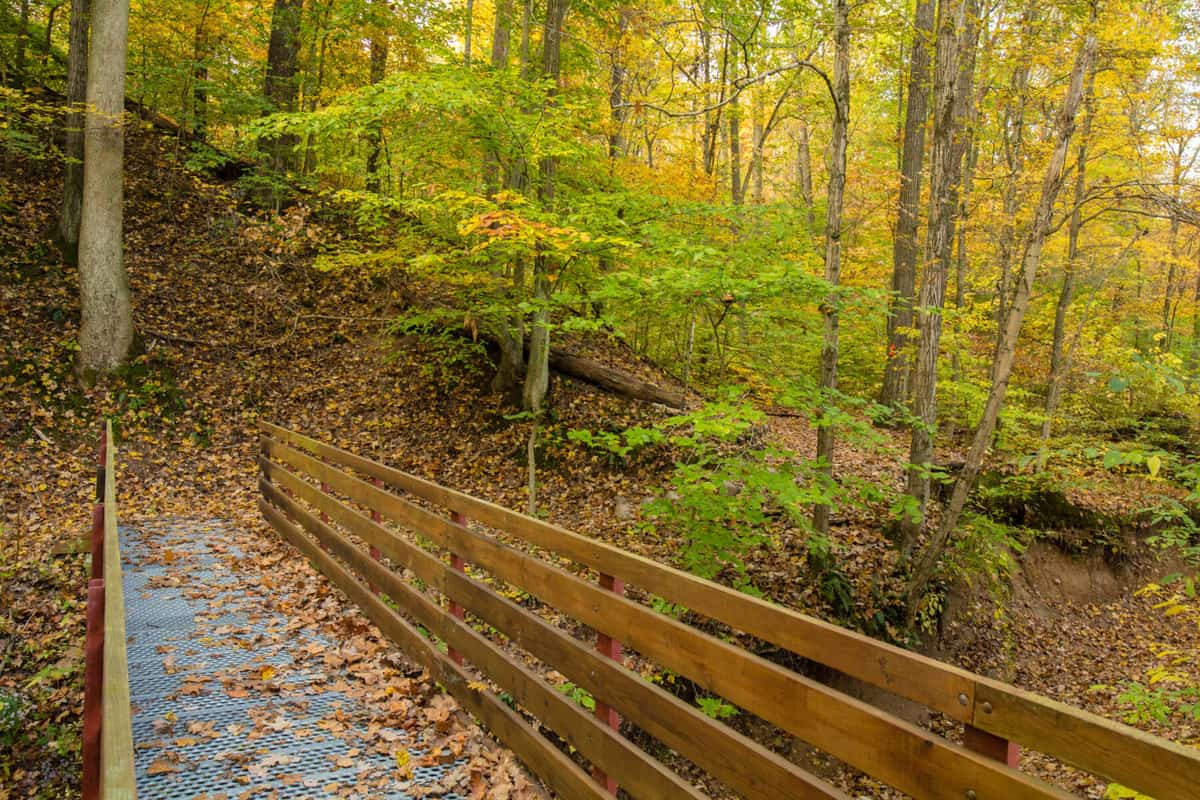
Trail of Tears State Park. (Missouri State Parks)
Kelpe says Trail of Tears State Park makes a great destination for running because much of the park is a wilderness area and the trails provide wonderful views of the Mississippi River. He says the trails are accessible for novice runners but will also challenge advanced runners and hikers.
There are three trails and four trailheads within the park, providing a varied experience.
The Lake Trail is a 2-mile loop perfect for newer runners, but it is also convenient for setting up a self-supported aid station for those wanting to do multiple laps. This trail has about 170 feet per mile of elevation gain, with one scenic section that runs along Lake Boutin.
The PeeWah Trail has eight to 10 miles of trail and two trailheads, upper and lower. The lower trailhead, near Lake Boutin, provides access to the Red Loop, which offers a backwoods “wilderness experience.” The upper trailhead provides access to the Yellow Loop, featuring spectacular vistas of the Mississippi River as the path meanders along the bluffs. This trail has around 160 feet per mile of elevation gain and some challenging climbs.
Kelpe’s personal favorite is the Sheppard Point Trail, a 3-mile out-and-back (1.5 miles each way) that showcases majestic views over the river. It is “a great place to take a moment to soak in the experience and to meditate,” said Kelpe. With a couple of technical sections and more than 200 feet per mile of elevation gain, he contends the trail will challenge even the most experienced trail runners.
Trail of Tears State Park has basic, electric, and sewer/electric/water campsites, as well as picnic sites and a visitor center that recounts the tale of the thousands of Native Americans who died during the forced march to relocate them from the Southeast region of the US to a territory west of the Mississippi River.
Author: Missy Phegley is a regular contributor to Terrain Magazine.
Top Image: Rim Rock Trail in Shawnee National Forest. (Brad Kovach)

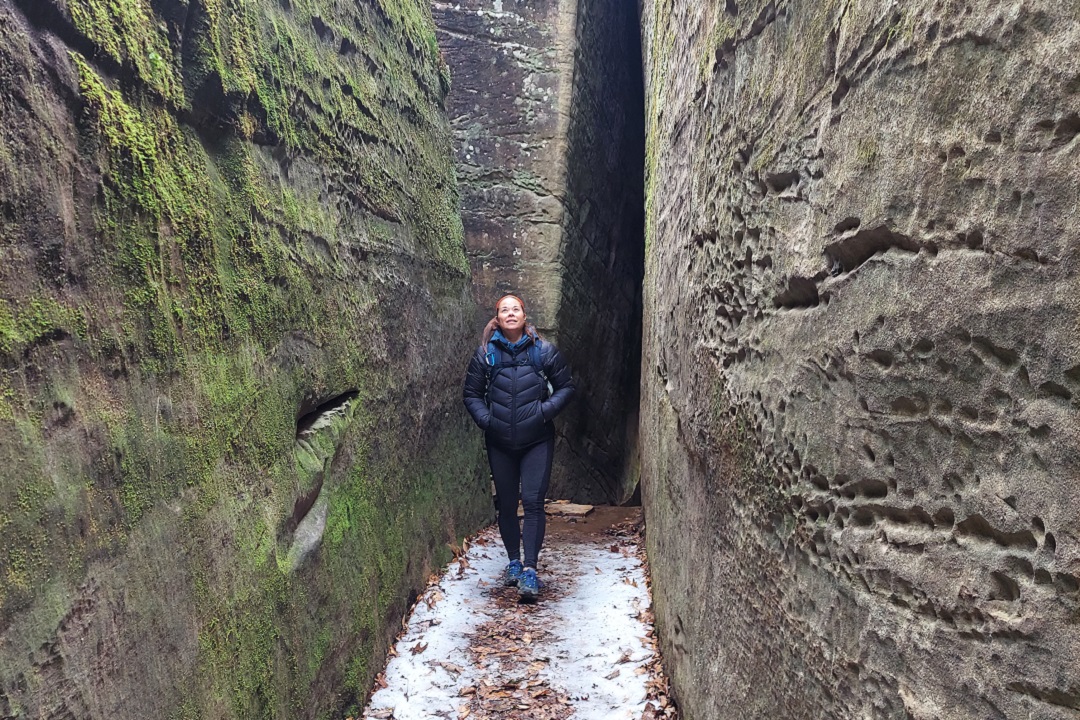
Leave A Comment